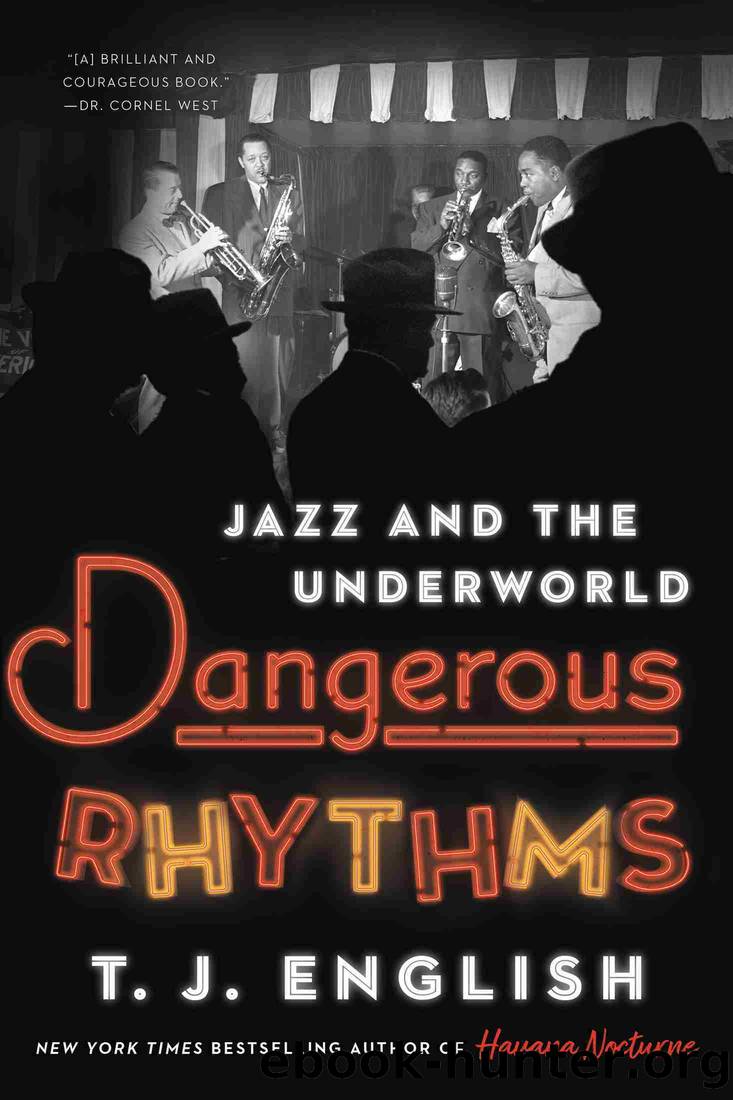Dangerous Rhythms by T. J. English

Author:T. J. English
Language: eng
Format: epub
Publisher: HarperCollins
Published: 2022-06-07T00:00:00+00:00
Strange Fruit
As Sinatraâs career headed for the stratosphere, the business of jazz once again adapted to changing times. In some ways, the emergence of Sinatra as a megastar brought about the end of the swing era. Singers, which had initially been an addendum to the big bands, stepped forward as the stars. Billie Holiday, Sarah Vaughan, Anita OâDay, Ella Fitzgerald, and many others became the main attraction. The big bands did not disappear entirely, but jazz aficionados wanted to experience the vocalists in a manner that was more nuanced and intimate. Small jazz clubs were back in demand.
The problem was that the social environment in which the clubs had once thrived was going through an evolution. Nowhere was this truer than in Harlem, U.S.A.
Of all the great jazz districts of the Prohibition era, few had more to offer than Uptown Manhattan, where the Harlem Renaissance had for Black folks given rise to the possibility of a thriving, cultured, self-sustaining universe of artists, intellectuals, race activists, and sports heroes all rolled into one. For a time, Harlem had more jazz clubs than anywhere, but those days were long since past. By the 1940s, Harlem had become an example of municipal neglect and commercial decay that would only get worse in the decades ahead.
Some point to the riot of March 1935, when the beating of an AfroâPuerto Rican teenager, believed to have shoplifted a penknife at the Kress five-and-dime store, led to community action against white-owned businesses on 125th Street, Harlemâs main commercial artery. Tension had been building since the onset of the Depression, when Black-owned businessesâincluding some jazz clubsâhad gone under while white-owned businesses secured bank loans and stayed afloat. The tension turned into violence, with three deaths and much property damage attributed to the riot.
The Harlem riot of â35 was a harbinger of things to come. In the wake of the riot, many of the big jazz clubs (the Cotton Club, Connieâs Inn, the Savoy Ballroom) either moved out of the neighborhood or closed altogether. On West 133rd Street between Seventh and Eighth Avenues, which had once been the location of nearly two dozen clubsâsome of them Black ownedâdoors were padlocked and gates shuttered, with the businesses to never open again.
If this werenât detrimental enough, in August 1943 another riot occurred. This one started outside the Braddock Hotel, located around the corner from the Apollo Theater. The Braddock had been a popular place for out-of-town jazz musicians playing gigs in New York, but it had recently fallen into disrepair. On a hot summer night, a police officer arrested a Harlem woman for disturbing the peace outside the Braddock. A local man who was an off-duty soldier in the U.S. Army tried to intervene and was shot in the shoulder by the cop. As the Black soldier was taken to the hospital, rumors circulated in the neighborhood that he had been shot dead by the cop.
Smoldering resentment over segregation, police abuse, and commercial apartheid in Harlem reached a boiling point that night.
Download
This site does not store any files on its server. We only index and link to content provided by other sites. Please contact the content providers to delete copyright contents if any and email us, we'll remove relevant links or contents immediately.
| Espionage | Hoaxes & Deceptions |
| Murder & Mayhem | Organized Crime |
| Serial Killers | White Collar Crime |
Mindhunter: Inside the FBI's Elite Serial Crime Unit by John E. Douglas & Mark Olshaker(9265)
Wiseguy by Nicholas Pileggi(5710)
Room 212 by Kate Stewart(5072)
Hitman by Howie Carr(5042)
Secrecy World by Jake Bernstein(4701)
Killers of the Flower Moon: The Osage Murders and the Birth of the FBI by David Grann(4410)
Papillon (English) by Henri Charrière(4228)
Breaking Free by Rachel Jeffs(4195)
Killers of the Flower Moon by David Grann(3998)
Say Nothing by Patrick Radden Keefe(3937)
American Kingpin by Nick Bilton(3820)
The Secret Barrister by The Secret Barrister(3662)
Molly's Game: From Hollywood's Elite to Wall Street's Billionaire Boys Club, My High-Stakes Adventure in the World of Underground Poker by Molly Bloom(3510)
Mysteries by Colin Wilson(3420)
In Cold Blood by Truman Capote(3346)
Signature in the Cell: DNA and the Evidence for Intelligent Design by Stephen C. Meyer(3099)
I'll Be Gone in the Dark by Michelle McNamara(3054)
Rogue Trader by Leeson Nick(3010)
Bunk by Kevin Young(2970)
